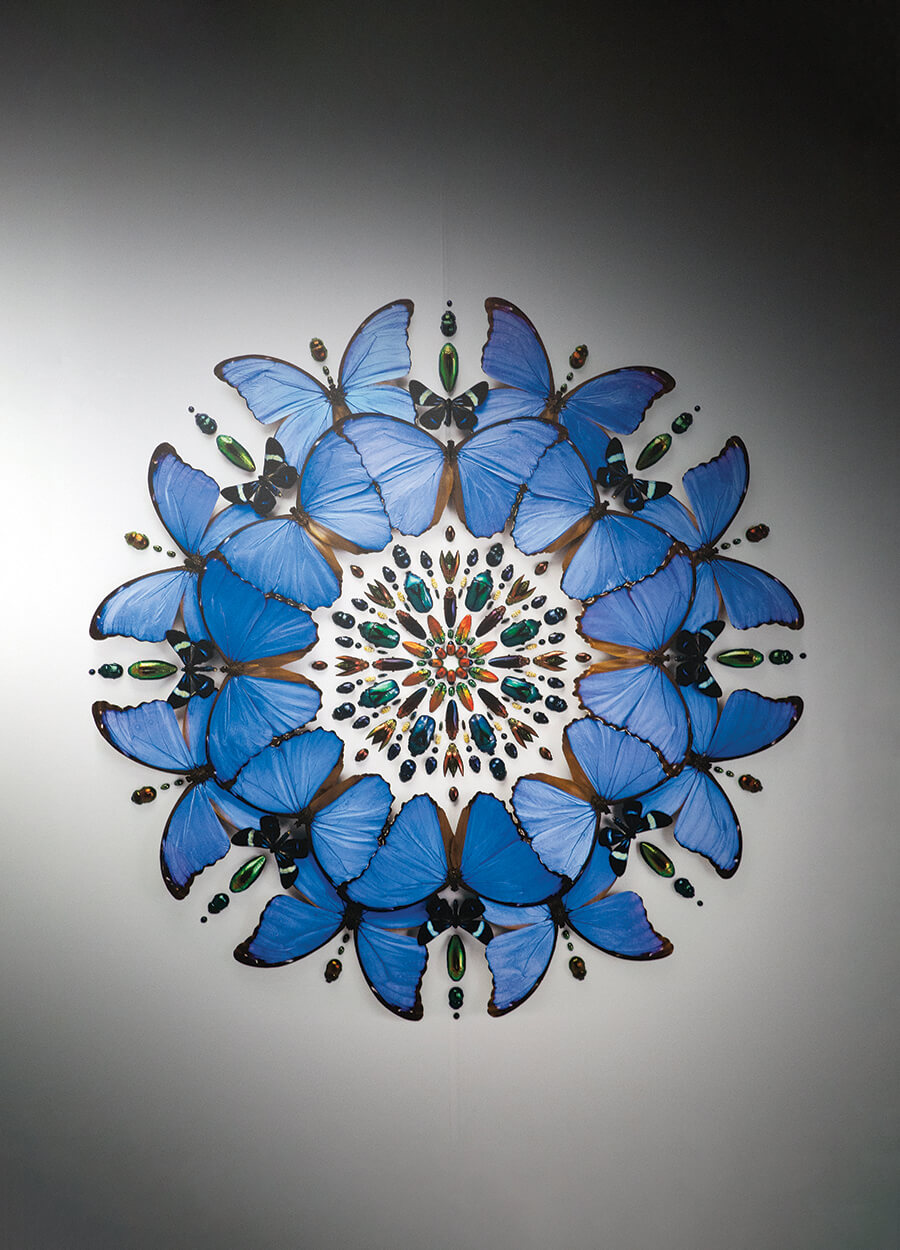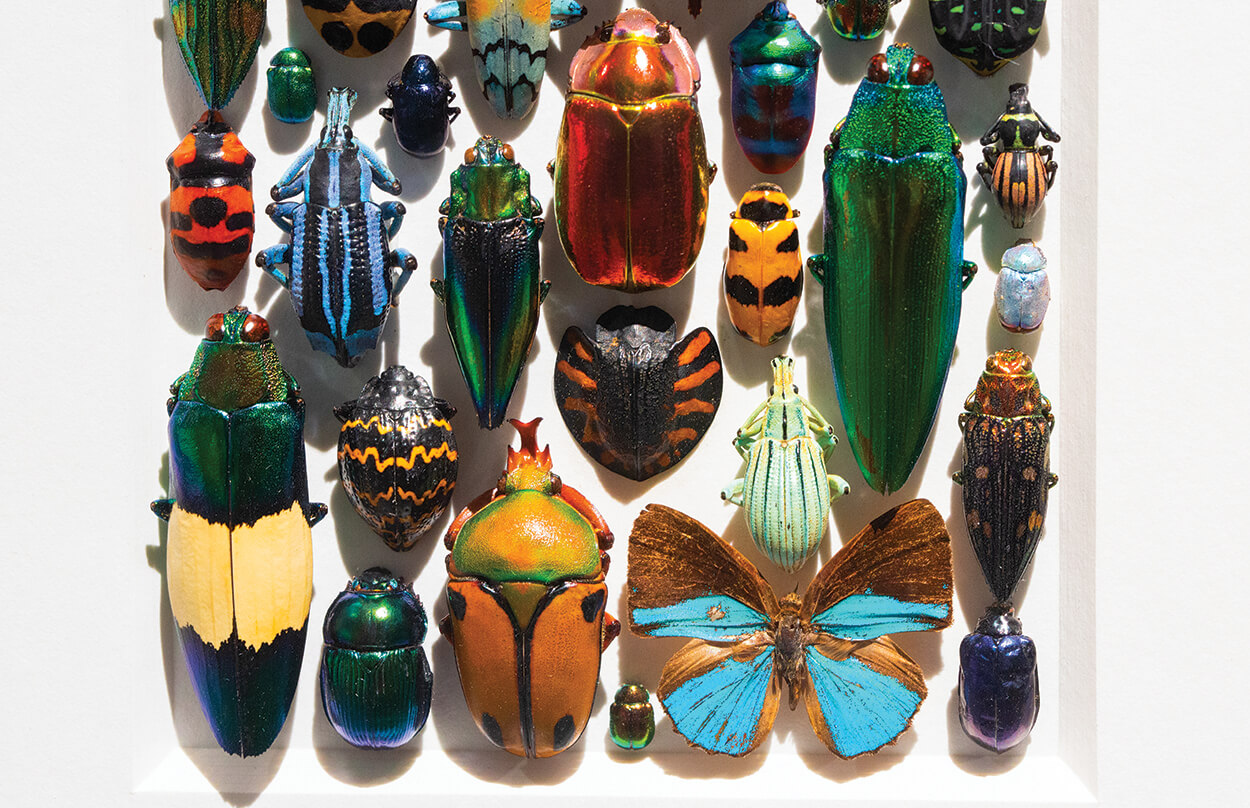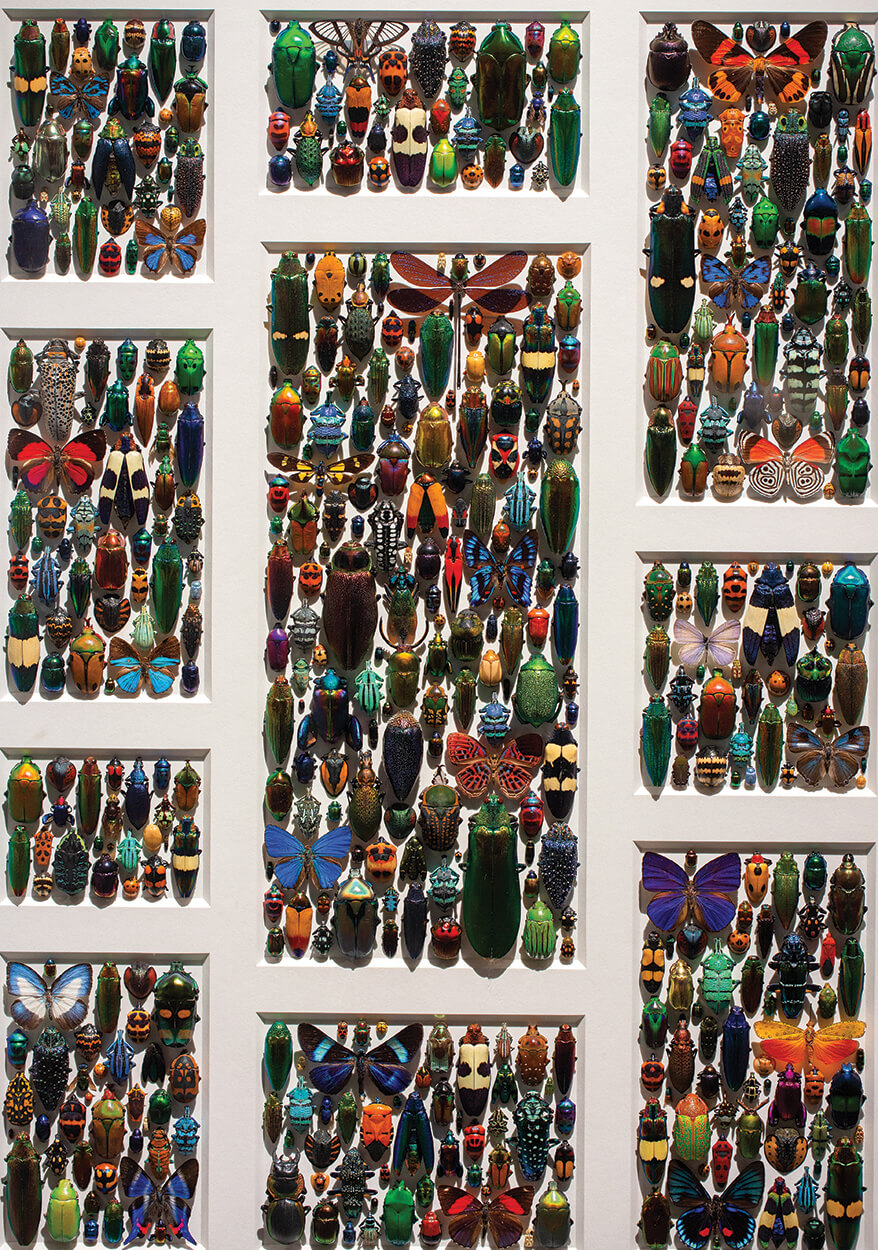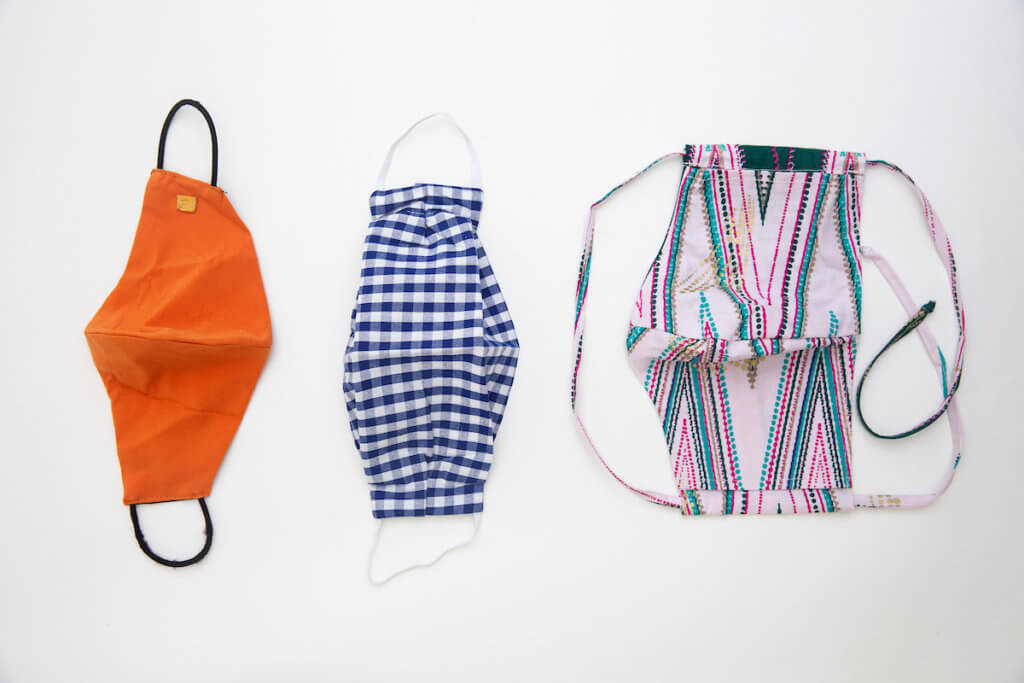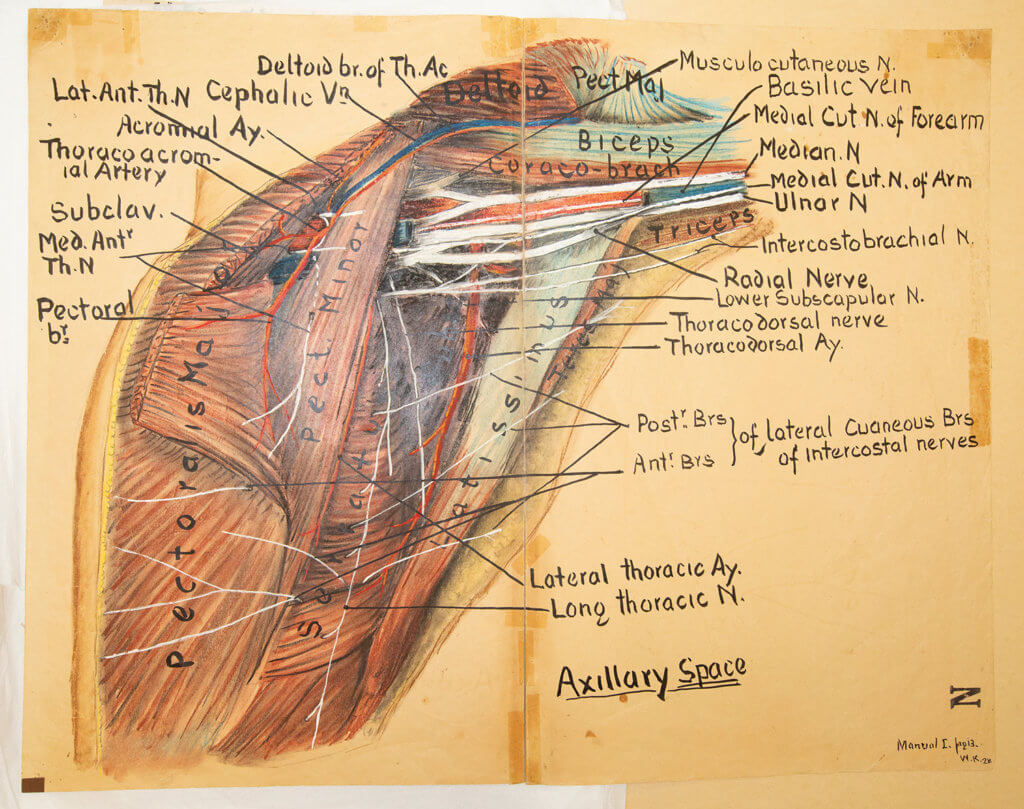A new HMNS exhibit inspires viewers to take a fresh look at nature
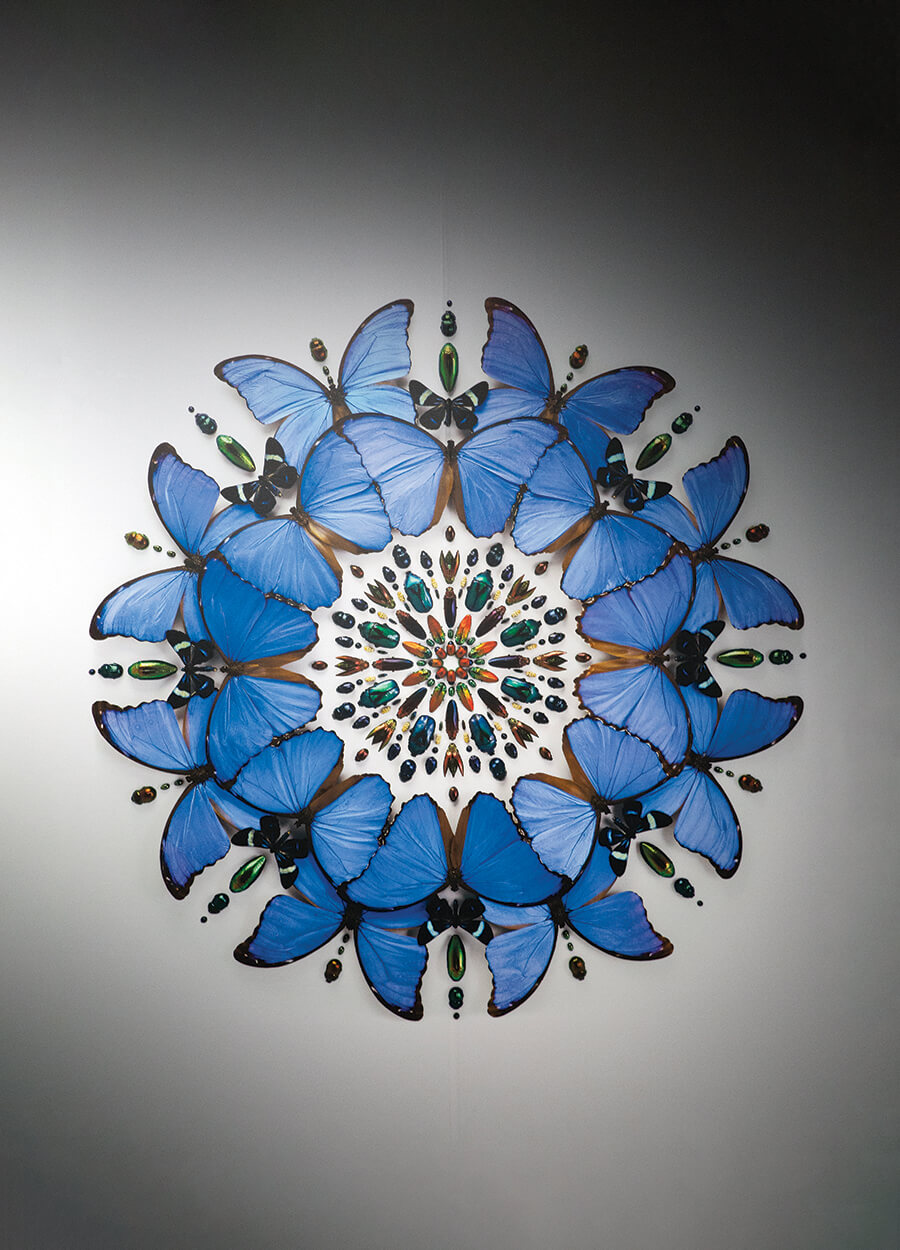
Artist and naturalist Christopher Marley arranges insects, birds, crustaceans, fish, plants and reptiles in precise, 3-D displays that make viewers feel as if they’ve stepped into a bejeweled natural kaleidoscope.
Biophilia: A Dialogue with Art, Nature and Science, Marley’s new exhibit at the Houston Museum of Natural Science (HMNS), immerses visitors in the beauty and diversity of the natural world.
“Biophilia is a term that literally means a love of life or living things and that, in one word, encompasses how I feel about the natural world,” Marley said in a statement within the exhibit. “As a naturalist, my education has been almost entirely experience-based in the fields and the forests. I was watching these entire little ecosystems functioning and interacting with one another and it was a pivotal moment for me to connect with the natural world.”
The geometric arrangements of animal, mineral and plant specimens force viewers to consider nature in a new context.
“If you look at these organisms on their own in their natural environment, you might think they are scary or dangerous,” said Erin Mills, entomologist and director of the Cockrell Butterfly Center at HMNS. “But this exhibit presents those creatures as artwork and allows viewers to see them in a different way.”
Walking through the exhibit, one cannot help but notice the immaculate condition of the hundreds of thousands of specimens. Marley collected them in an environmentally sensitive way, by either reclaiming them, as he did with vertebrates and blooms, or culling them sustainably, as he did with oceanic invertebrates and insects.
“I employ natives in these different ecosystems to sustainably harvest common species,” Marley said in a statement. “It gives the locals a way to make a living and it also reverses the economic pressure to develop that habitat.”
As humans, it is also important to remember that we rely on these species for survival. From jewel-toned insects to rainbow-colored parrots and carnivorous plants, all the specimens play a vital role in the planet’s ecosystem and, in turn, human health and survival.
“It’s kind of like Jenga,” Mills said, referring to the classic block-stacking game. “What happens if you take out the one piece that is holding everything together? These species do so much to pollinate and even eat plants. They have such an intricate relationship in all of our food webs that it all builds on itself. These species are also great indicators of the health of an environment, so if you remove even one of these creatures, it could be devastating.”
Biophilia: A Dialogue with Art, Nature and Science will be on display through September 2 at the Houston Museum of Natural Science, 5555 Hermann Park Dr. Information: 713-639-4629.

